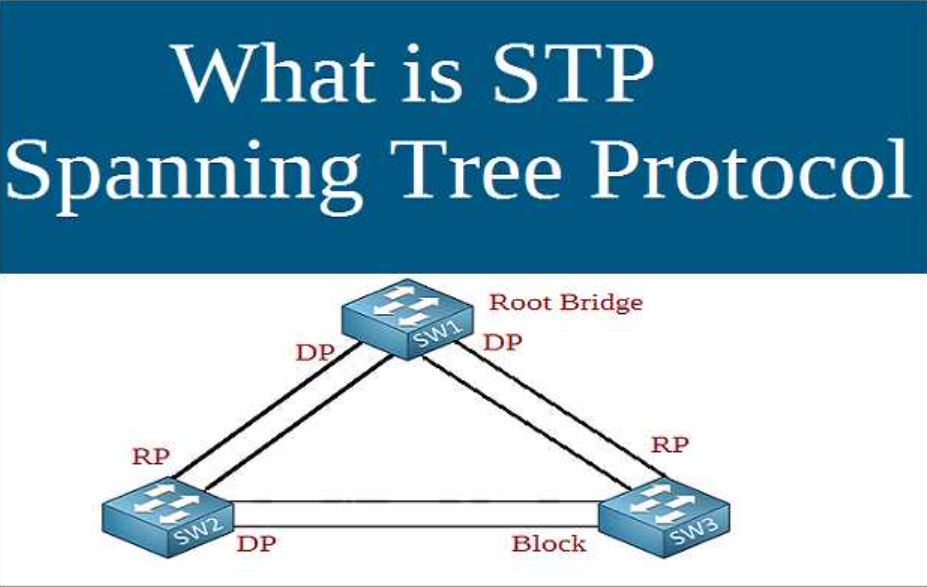Introduction:
In the realm of computer networking, ensuring seamless communication between devices is paramount. Networks often resemble intricate webs of interconnected devices, and managing the flow of data within such networks requires careful planning and implementation. One crucial technology that facilitates this is the Spanning Tree Protocol (STP). In this comprehensive guide, we delve into the intricacies of STP, its significance, operation, variants, and its role in maintaining network stability and resilience.
What is Spanning Tree Protocol (STP)?
Spanning Tree Protocol, commonly abbreviated as STP, is a network protocol that ensures a loop-free topology in Ethernet networks. The primary purpose of STP is to prevent the occurrence of network loops, which can lead to broadcast storms and degraded network performance. Developed by Dr. Radia Perlman in the 1980s, STP has become a fundamental building block of modern networking infrastructure.
How Does STP Work?
STP operates by identifying redundant links within a network and selectively blocking some of these links to create a loop-free topology. It achieves this through the election of a designated bridge (switch) for each network segment, known as the root bridge, and the calculation of the shortest path to the root bridge for each network segment. This process involves the exchange of Bridge Protocol Data Units (BPDUs) between switches to determine the topology of the network.
The STP Algorithm:
At the core of STP is the algorithm used to calculate the spanning tree. The algorithm, based on the IEEE 802.1D standard, employs a distributed computing approach wherein switches communicate with each other to establish the topology. The key steps of the STP algorithm include:
Bridge Election: Each switch in the network participates in the election process to determine the root bridge, which serves as the focal point of the spanning tree.
Root Path Cost Calculation: Switches calculate the path cost to reach the root bridge through each available link. The path cost is based on the speed of the link, with faster links having lower costs.
Port State Determination: Based on the calculated path costs, switches designate certain ports as designated ports, which are part of the active topology, while other ports are placed in a blocking state to prevent loops.
Variants of STP:
Over the years, several variants of STP have been developed to address specific requirements and improve upon the original protocol’s limitations. These variants include:
Rapid Spanning Tree Protocol (RSTP): RSTP, defined in IEEE 802.1w, improves the convergence time of STP by reducing the time it takes to transition ports between states. It achieves this by introducing new port roles and states, such as the alternate and backup ports, which allow for faster convergence in the event of link failures.
Multiple Spanning Tree Protocol (MSTP): MSTP, defined in IEEE 802.1s, extends the capabilities of STP by enabling the creation of multiple spanning trees within a single network infrastructure. This allows for greater flexibility in network design and better utilization of resources by segregating traffic into different VLANs.
Per-VLAN Spanning Tree Protocol (PVSTP): PVSTP is a Cisco proprietary extension of STP that creates a separate spanning tree for each VLAN in a network. This provides finer control over network traffic and allows for optimized load balancing and redundancy at the VLAN level.
Benefits of STP:
The adoption of STP offers several benefits to network administrators and organizations, including:
Loop Prevention: By eliminating network loops, STP ensures the stability and reliability of Ethernet networks, preventing broadcast storms and packet collisions.
Redundancy: STP allows for the use of redundant links in network designs, enabling fault tolerance and failover capabilities to maintain network connectivity in the event of link or switch failures.
Traffic Engineering: Through the optimization of spanning tree paths, STP enables administrators to control the flow of traffic within the network, ensuring efficient utilization of network resources.
Scalability: STP can scale to accommodate large and complex network topologies, providing a robust framework for building enterprise-grade networks.
Challenges and Considerations:
While STP offers significant benefits, it also presents certain challenges and considerations for network administrators:
Convergence Time: Traditional STP implementations may suffer from slow convergence times, particularly in large networks with complex topologies. This can lead to delays in network recovery following link failures.
Resource Utilization: STP relies on the blocking of redundant links to create a loop-free topology, which can result in underutilization of network resources. Administrators must carefully design network configurations to maximize resource efficiency.
Compatibility Issues: Different variants of STP may not be interoperable, leading to compatibility issues in heterogeneous network environments. Administrators should ensure consistency in STP configurations across all network devices to avoid potential conflicts.
Conclusion:
In conclusion, Spanning Tree Protocol (STP) plays a crucial role in maintaining the stability, resilience, and efficiency of Ethernet networks. By preventing network loops and facilitating the creation of loop-free topologies, STP ensures seamless communication between network devices while enabling redundancy and fault tolerance. Despite its challenges, STP remains a foundational technology in modern networking and continues to evolve with the introduction of new variants and enhancements. As networks become increasingly complex, understanding and effectively implementing STP is essential for network administrators to build robust and reliable network infrastructures.
For More Articles Click




